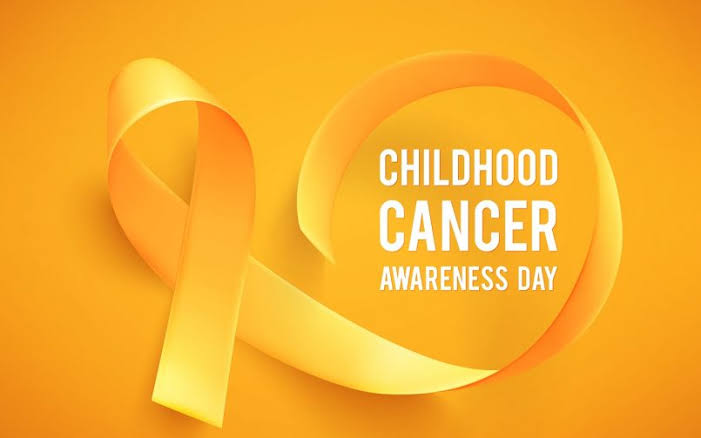Childhood cancers are rare but they are the leading cause of death in children. There are chances of parents confusing the early signs of cancer with that of viral illnesses or injuries. While most childhood cancers are curable, the awareness around them is important for better outcomes.
In February every year, International Childhood Cancer Day is observed to spread awareness around the kinds of childhood cancers, their diagnosis and treatment.
An estimated 400,000 children and adolescents of 0-18 years develop cancer. The most common types of childhood cancers include leukemias, brain cancer, lymphomas, solid tumours, such as neuroblastoma, Wilms tumor, a disease in which malignant (cancer) cells are found in the kidney, and may spread to the lungs, liver, or nearby lymph nodes. Wilms tumor usually occurs in children younger than 5 years old. and bone tumors.
In high-income countries, where comprehensive services are generally accessible, more than 80% of children with cancer are cured. In low and middle-income countries (LMICs), this percentage is less and the major hurdle is lack of awareness leading to delay in the diagnosis.
Common Symptoms of Childhood Cancer:
“Cancer often presents with nonspecific symptoms resembling to common viral illnesses, thus delaying access to proper and specific medical care. Primary care physicians should have a raised index of suspicion in children who have worrisome or persisting signs and symptoms,” says Dr. Vikas Dua, Director, Pediatric Haematology, Haemato – Oncology & Bone Marrow Transplant, Fortis Memorial Research Institute
Signs of different kinds of childhood cancers parents must watch out for:
Red flag signs for leukemia or lymphoma include:
* Prolonged fever with no identifiable cause
* Unexplained and protracted pallor
* Malaise, limp or refusal to walk
* Palpable lymph nodes: When lymph nodes increase in size they are called enlarged lymph nodes. They can be in neck, armpits, and groin
* Bleeding diathesis characterized by petechiae (tiny purple, red, or brown spots on the skin), ecchymoses (a discoloration of the skin resulting from bleeding underneath), recurrent nosebleeds and bleeding gums
Hepatosplenomegaly, a disorder where both the liver and spleen swell beyond their normal size
Warning signs of Hodgkin Lymphoma:
Prolonged drenching night sweats, fever, and significant weight loss; together with lymphadenitis (enlargement in one or more lymph nodes), are typical signs of Hodgkin lymphoma.
Signs of Tumor of Central Nervous System:
New onset or persistent morning headaches associated with vomiting, neurologic symptoms like unsteady staggering gait, or back pain should raise concern for tumors of the central nervous system.
Signs of Abdominal and Bone Tumor:
Palpable masses in the abdomen or soft tissues, and persistent bone pain not responding to pain killers and that awakens the child are some of the red flags for abdominal, soft tissue, and bone tumors. Abdominal mass when associated with blood in urine (hematuria) or hypertension should raise a suspicion towards renal tumors (Wilms tumor).
Warning Signs for Retinoblastoma:
White pupillary reflex (leukocoria) is a red flag for retinoblastoma (malignant tumor of the retina). Increased suspicion is also warranted for conditions including various immunodeficiency syndromes, certain genetic conditions and familial cancer syndromes such as Down syndrome, Li-Fraumeni syndrome, hemihypertrophy, neurofibromatosis, and retinoblastoma which are associated with a higher risk of cancer.
“A correct diagnosis is essential to prescribe appropriate therapy for the disease. Children also need special attention to their continued physical and cognitive growth, nutritional status, thus requiring a dedicated, multi-disciplinary team. Cure is possible for more than 80% of children when childhood cancer services are accessed timely,” concludes Dr Dua.
CyberKnife Treatment for Children:

The CyberKnife – one of the most advanced forms of radiosurgery is used to treat children. It a painless, non-invasive treatment that delivers high doses of precisely targeted radiation to destroy tumors or lesions within the body.
Cyberknife offers two important benefits to patients and physicians: younger, more wiggly children or infants can be anesthetized for short periods to keep them still during the procedure, and patients of all ages can undergo treatment without being locked into the large metal head frame required by other radio-surgery treatments, such as the Gamma Knife.
“This is a huge advantage for kids,” said Michael S.B. Edwards, MD, Packard Children’s chief of pediatric neurosurgery and director of regional pediatric neurosurgery. “Young patients in the past were usually required to wear a Gamma Knife head frame, and had to remain anesthetized during the entire, often daylong, procedure. Now we can treat newborn infants up to older children, who can hop off the table and go home or to school after the initial imaging step while we plan the treatment strategy.”
The noninvasive process uses tiny, focused beams of radiation to perform radio-surgery on a patient’s head or body. This technique allows doctors to attack trouble spots in the body and/or deep within the brain while minimizing the dose of radiation to surrounding healthy tissue. This issue is particularly important in children, whose brains are still developing.
A radio-surgery alternative to the Cyberknife, the Gamma Knife. But the Gamma Knife relies on a rigid metal frame attached directly to the patient’s skull to orient the radiation beams, making it difficult to treat infants or young children with small or fragile heads. Because the frame cannot be removed between the initial imaging and subsequent treatment, doctors also have to work fast.
“With the Gamma Knife, the clock is ticking,” said Edwards. “We have to place the frame; perform the CT, MRI or other imaging studies; get everyone involved to meet and plan the treatment; and then treat the patient—all while the patient is intubated and asleep. It’s not an optimal situation.”
In contrast, the Cyberknife, which was developed at Stanford University by Dr. John Adler, uses a mesh mask to stabilize the head.
The technology tracks any unintentional movements on the part of the patient and adjusts the radiation path as necessary.
Children who can understand the importance of holding still can undergo the treatment while conscious; squirmy infants and younger kids can have short-term anesthesia for the approximately hour-long diagnostic and treatment sessions.
“The difference between the two technologies is pretty striking,” said Anita Honkanen, MD, chief of pediatric anesthesia at Packard Children’s. “Gamma Knife patients are usually anesthetized and intubated for hours, and often have a prolonged recovery. With the Cyberknife, recovery is usually quicker. And because they don’t usually have to be intubated, we can often treat children with minor colds who would otherwise need to be rescheduled until they’re healthy.”
Finally, the Cyberknife’s laser positioning technology makes it possible to treat tumors in other areas of the body.
After the treatment is over most children can go about their daily activities, including going to school or play.
For more information about treating children with CyberKnife therapy contact our experts at the CyberKnife Center of Miami 205-279-2900.
Information Provided By: International Childhood Cancer Awareness Day & Stanford University

